
About the Apiary
An informative and sometimes humorous column published in
The New Zealand Beekeeper Journal
WINTERING DOWN AND CONTROLLING PESTS
About the Apiary - June - 2016IIt’s been a prolonged autumn with beautiful, warm weather. On the warmer, northerly facing slopes in some areas, Spanish heath has just started flowering and is already being visited by bees. This is a winter source that generally starts in July. Tree lucerne, gorse and some of the wattle species are also starting to flower. All these sources stimulate brood production, which uses valuable winter stores.
Normally bees only start chewing through the winter stores when major brood rearing starts in August. I’ll have to watch the hive reserves in these areas.
Winter preparations
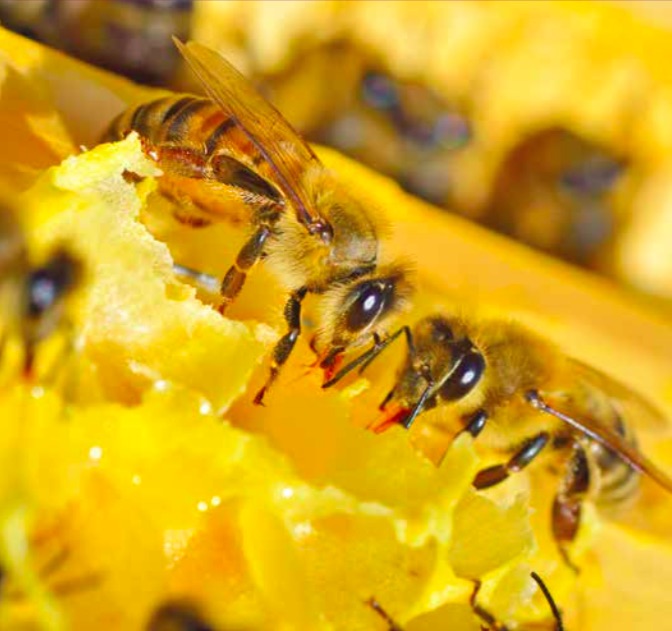
Up until mid-May the bees were flying well, probing neighbouring hives and robbing weak hives. I have had to close entrances down to a little under 25 millimetres to allow smaller hives to better protect themselves from both robbing bees and wasps. I used a soft plastic foam that the bees can remove when they want a bigger entrance.
I have also been inspecting nucleus hives and setting them up for winter. Some were heavy and plugged out with honey while others, made later, were hanging on with just a half frame of wet honey. This gave me an indication of the honey flow in some areas, with nothing put on since early December.
In one apiary I found that nearly all hives had wet honey. My first thought was that perhaps the bees had been robbing hives and that I had better watch them in case they had robbed an AFB hive. I did a full, slow brood inspection of every frame but found nothing.
Looking around at the bottom of the hill, I noticed that the bees were collecting willow aphid honeydew. Knowing that this generally sets solid, I replaced the frames in the nucs with capped honey combs produced earlier in the season to take them through most of winter. Normally I would have fed sugar syrup, but these nucs were too far away to visit every couple of days to replenish the feeders.
I have also been marking the best hives in each apiary as potential drone producers. These hives produced well, had good brood patterns, were full of bees and brood and were easy to handle. Some had spare bees in the top (Miller, dry sugar) feeders. I used these extra bees to boost some of the smaller hives; that is, the ones most affected by the late placement of varroa strips. I gave the bees and hive a quick spray with an air freshener and the bees united as if they were from the same hive.
Yes, some of my strips went in late. This autumn I have been relying on weekly formic acid treatments to knock off a few mites each time. In some hives, the varroa mites built up to an extent that deformed wing virus was showing, while others still had strong populations with lots of brood and only a small amount of mite damage starting to show. Other hives had completely ceased brood rearing and were forming a loose cluster, while a few had eight frames of brood. The difference was amazing. Those with brood had been stimulated by willow dew, perhaps, and were starting into their winter stores.
A bad year for wasps
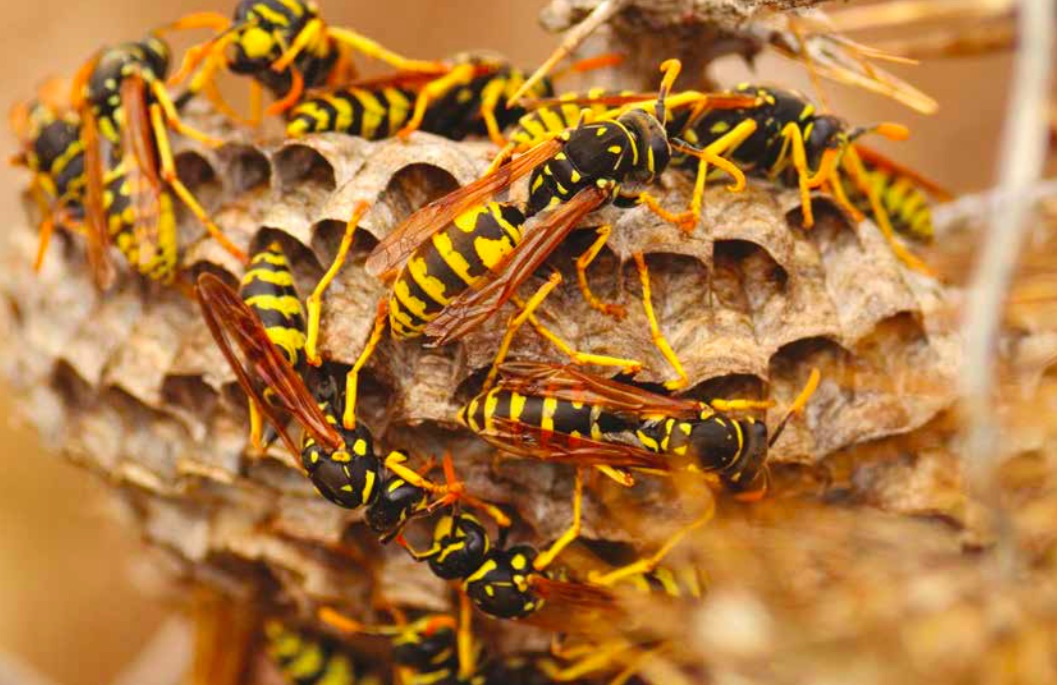
Wasps were particularly bad in some areas this year due to the hot, dry summer and autumn. A quick glance at the hive entrance tells you whether your hives are being bothered, as there will be lots of bees at the entrance with only a few water carriers flying.
I walked around one property and powdered eight wasp nests. My pedometer showed I had taken 2100 steps walking up and down all the farm tracks in the bush. After a few years, I now know that they are likely to build their nests in the soft soil along the edges of the bush tracks. It’s a fair walk but there is satisfaction in cleaning out an area and seeing the difference in the hive activity when the nests have been killed.
In the days when sacks were used on farms for grain and wheat for the chickens, farmers used to hang the sacks on fences and the queen wasps would overwinter in the folds. It was easy to reduce the following year’s wasp population by eliminating a few queens on a frosty morning when they were inactive.
I don’t want to give the impression that I’m against wasps. They fill a niche in the ecosystem, reducing caterpillar and fly numbers (we used to be plagued with flies years ago), and perhaps they help to reduce scolypopa numbers when these first start to appear in the spring. Everything has a place in nature so when the wasps start to rob beehives, I reduce their numbers.
Controlling other pests, including varroa
I have put rat baits in plastic bottles in all my apiaries. It has been a good breeding season for these pests and now it’s time to get rid of them before they chew a hole through a super and make their winter nest in a hive.
It’s easy to tell whether you have mice or rats around the apiary. Rats will try to remove the plastic bottle with the baits inside, whereas mice will just eat the baits, leaving the bottle in place under the hive pallets. June and July are important months to monitor varroa mites. June and July are important months to monitor varroa mites. It may seem unnecessary given that we treated our hives months ago but in winter, when the weather warms for a few days and bees can fly for a few hours, they will seek out weak feral hives (escaped swarms) and rob them, bringing back a load of varroa mites. I have observed that just one hive collapsing nearby has enough varroa to affect a whole apiary of 16 hives. One or two hives robbing I have observed that just one hive collapsing nearby has enough varroa to affect a whole apiary of 16 hives.
June and July are important months to monitor varroa mites. It may seem unnecessary given that we treated our hives months ago but in winter, when the weather warms for a few days and bees can fly for a few hours, they will seek out weak feral hives (escaped swarms) and rob them, bringing back a load of varroa mites.
I have observed that just one hive collapsing nearby has enough varroa to affect a whole apiary of 16 hives. One or two hives robbing will collapse in a month and when these too are robbed, the whole apiary collapses rapidly.
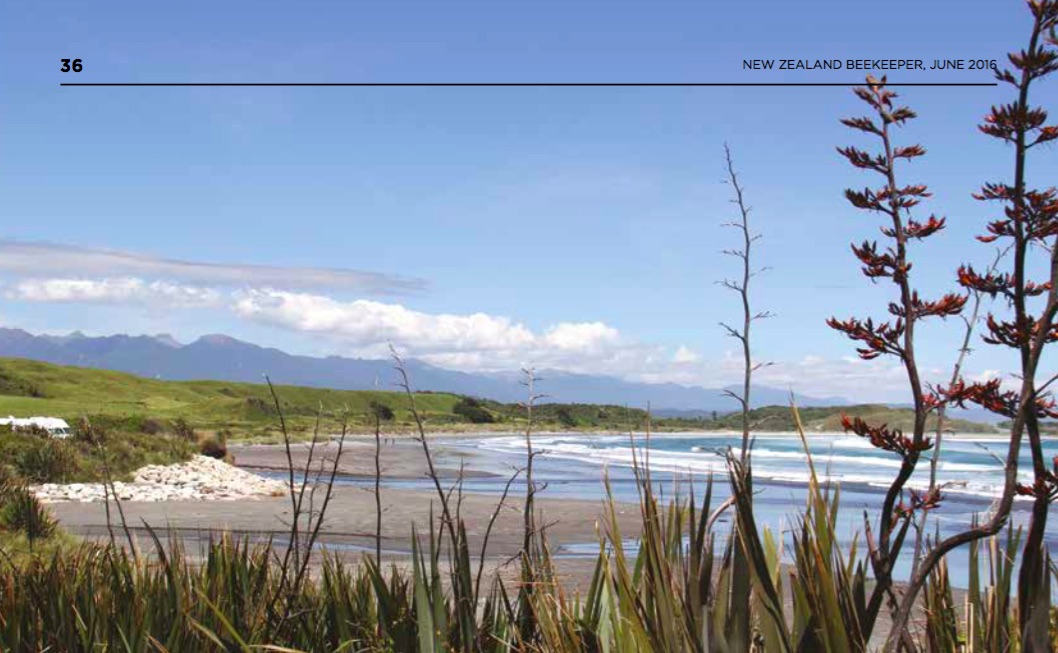
If your hives are situated along the coastal strip, it might pay to monitor a few of the strong hives that are flying well for varroa mites. If mite numbers are between two to five percent, I would re-treat the apiary. Beekeepers whose hives are in the colder, inland areas need not worry as their bees will hardly be flying.
Winter tasks
Most beekeepers slacken off during the winter, work fewer hours and take a holiday at some stage in a warmer place, but there’s still work to do. A key task is hive maintenance— making up frames or waxing plastic frames, replacement boxes, pallets and lids, and dipping and repainting boxes.
It used to be that I could get away with honey supers with extra entrances (rotten or chipped corners). However, with the increase in beehive density, with so many new beekeepers and commercial beekeepers expanding their bee numbers, any extra entrances are a potential robbing point. I even have had to block the top entrance in the split boards I use as hive mats until robbing from wasps and bees diminishes.
You can save time by ordering fully made-up gear. Order early so it arrives in time for you to use it: this can save weeks of work.
I still prefer to use wooden frames with wax foundation in my brood boxes, but wooden frames with plastic inserts are just as good. When wax frames become dark with brood rearing, they can be ditched easily and melted out. Regular comb replacement means your bees are being produced in a clean environment.
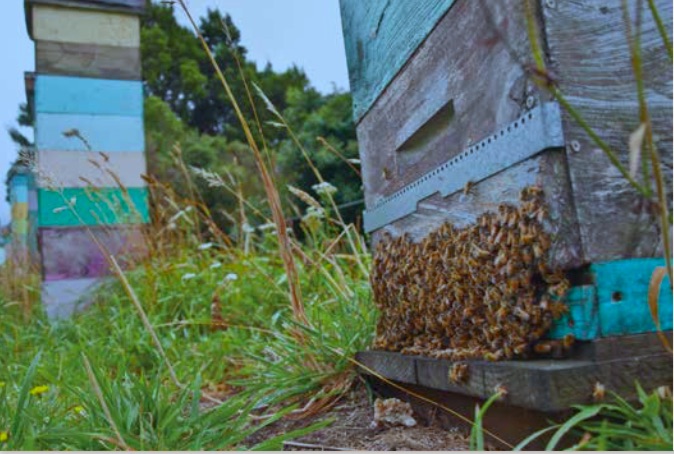
I’m going to leave most hives with plenty of honey in the hope that they build during the winter and will be making preparations for early swarming. As soon as I see queen cells with eggs, I will remove all the queen cells and buds and put a graft into these hives to make early queens ready to mate in the first or second week of October. This task is also timed to hit the first bush flow in my area, which provides good nutrition, good nectar flow, and everything required to raise good queens and healthy big drones.
Be prepared for spring
Around the third week of October, the equinoctial winds start and the temperature drops for another two to three weeks to less than 20°C. My hives are particularly affected by this change because of the nearness of the ranges and our proximity to Cook Strait. They don’t call it windy Wellington for nothing!
After the winds start, the weather is reasonable for nectar collecting but not good for queen mating. It’s also unlikely that the hives that had high mite numbers in the autumn will have recovered completely so won’t, I hope, be in swarming mode. This will give me time to muck around queen rearing by putting in cell bars into every colony likely to swarm. Those colonies that build early drones can be split to accommodate the queen cells.
All of this requires knowledge of your area and observing the conditions of your hives when you first inspect them in September. You have to know when your first honey flow starts in each area (as this induces swarming in strong hives), where the warm sheltered spots are for mating queens, and where the drone-congregating areas are.
If you know the location where drones congregate, you can flood these areas with drones and then place nuc hives on the outskirts of these areas, hoping that your queens are far enough away to mate in the areas you flood with drones. Otherwise, spring matings can be a ‘hit and miss’ situation.
Rapid changes in the weather can see queens lost or matings delayed. It’s not until you try to raise a few queens yourself that you really appreciate how much our professional queen breeders have to go through so that you end up with a queen in your mailbox.
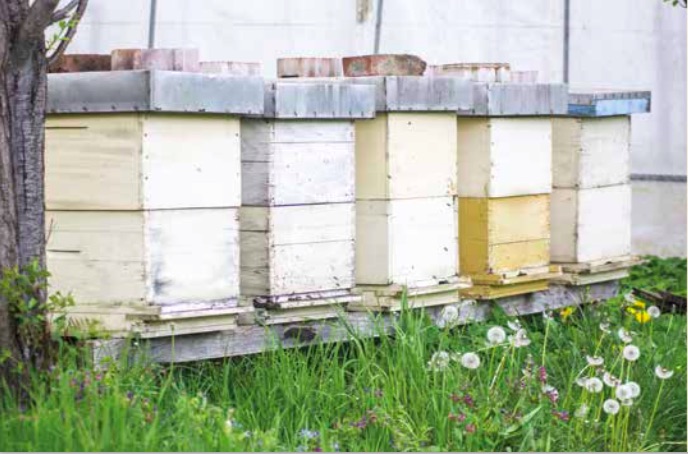
Take a break
Some commercial beekeepers take their annual break during the winter and head for warmer climates to relax and recharge the batteries. It’s not until you are away for two weeks that you relax enough to be able to put some concerted thought into planning for the coming season.
Don’t take too much time off. Have everything ready for spring, as you don’t have time to do this once the rounds of hive inspections start.
So that’s it for the season. Get away for a decent break. Start by going to conference. Even though a conference programme may have a topic you’re not interested in, it can really surprise you. One little thing learnt can repay your investment many times over.
Things to do this month
Render down cappings and old combs. Check stored frames for wax moth. Make up new equipment for the coming season. Have at least three frames of foundation on hand, or even a box of new foundation frames for each hive to reduce the toxins, spores (Nosema, chalkbrood and AFB) and viruses in your brood frames.
Check the effectiveness of your mite treatments for the odd hive that has not responded to strip treatments as well as expected. Bees dead in brood cells with tongues extended is a sign of varroa. Mite resistance to strips is increasing.
Hives are dying in the Waikato and other places, I suspect because of varroa resistance to both Apistan and Bayvarol.
It's very important to do either an alcohol wash or a soap wash of 300 bees.
Check the strongest and weakest hives to start with if the weather allows.
Re-evaluate apiary sites for winter access. Plant pollen and nectar sources for spring and autumn. Consider working with the farmers to plant long-term sources. A single willow can support the development of an apiary when it’s 30 years old. A group of camellias provides both colour and food for bees in the autumn. Learn more about Trees for Bees at conference.
Frank Lindsay